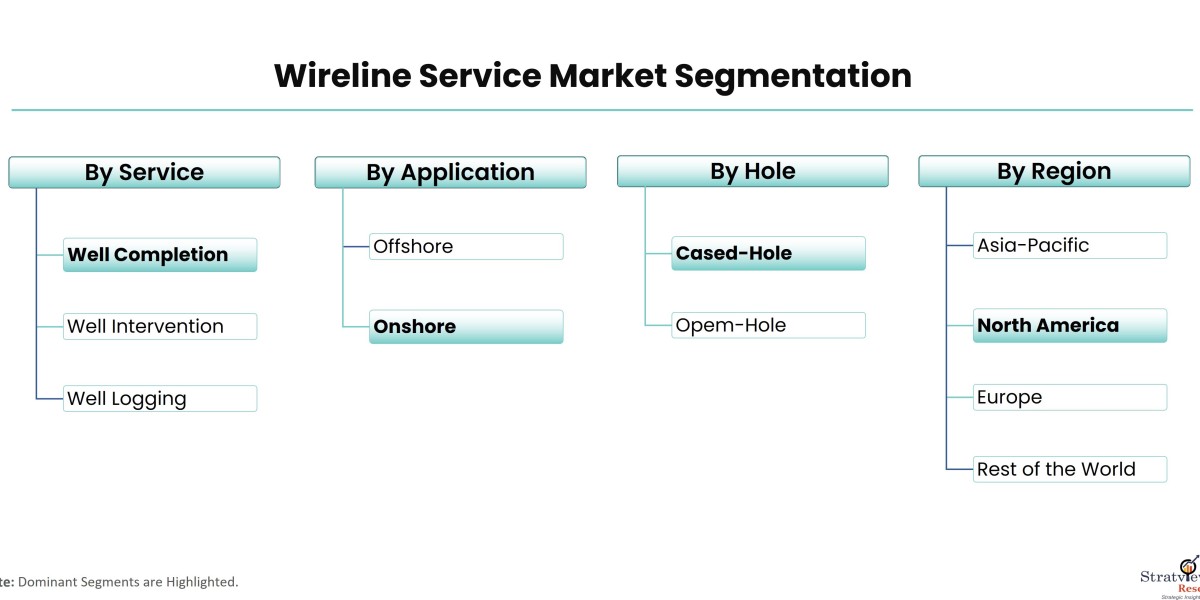According to Stratview Research, the wireline service market was estimated at USD 8.31 billion in 2022 and is likely to grow at a CAGR of 2.2% during 2023-2028 to reach USD 9.5 billion in 2028.
In the dynamic realm of the oil and gas industry, where efficiency is paramount, innovations in wireline services play a pivotal role in driving productivity, reducing costs, and ensuring operational safety. As the industry continues to evolve, embracing cutting-edge technologies and methodologies becomes increasingly essential for companies seeking to maintain a competitive edge. In this article, we delve into the realm of wireline services in the oil and gas sector, exploring the latest innovations and their impact on fueling efficiency.
The Crucial Role of Wireline Services
Wireline services are integral to the exploration, production, and maintenance of oil and gas wells. They involve the use of specialized cables and tools that are lowered into wells to perform various tasks, including data collection, formation evaluation, well intervention, and completion operations. These services provide crucial insights into subsurface conditions, reservoir characteristics, and well performance, enabling operators to make informed decisions that optimize production and maximize recovery.
Innovations Driving Efficiency
Advanced Logging Technologies: Innovations in logging tools and sensors allow for real-time data acquisition and analysis, providing operators with immediate insights into reservoir properties and fluid behavior. High-resolution imaging techniques, such as acoustic and electromagnetic logging, enhance reservoir characterization and help identify potential production zones with greater accuracy.
Automation and Robotics: Automation and robotics are revolutionizing wireline operations by reducing human intervention, improving safety, and enhancing efficiency. Robotic wireline units equipped with artificial intelligence and machine learning algorithms can perform complex tasks autonomously, such as running and retrieving downhole tools, optimizing tool placement, and executing precise measurements.
Integrated Software Solutions: Integrated software platforms streamline wireline data management and interpretation, enabling operators to visualize, analyze, and interpret vast datasets more effectively. These solutions facilitate collaboration among multidisciplinary teams, accelerate decision-making processes, and enhance overall operational efficiency.
Wireless Technologies: The adoption of wireless telemetry systems eliminates the need for traditional wireline cables, reducing deployment time, minimizing equipment footprint, and enhancing operational flexibility. Wireless downhole sensors and communication networks enable real-time monitoring of well conditions, allowing operators to proactively identify issues and implement corrective actions promptly.
Drilling Optimization: Wireline services play a critical role in drilling optimization by providing geosteering capabilities, formation evaluation data, and reservoir modeling insights. By integrating wireline measurements with drilling parameters, operators can optimize wellbore placement, improve drilling efficiency, and maximize hydrocarbon recovery.
Benefits and Implications
The integration of innovative wireline technologies and methodologies offers several benefits to oil and gas operators, including:
Improved reservoir understanding and characterization
Enhanced well performance and productivity
Reduced operational costs and downtime
Minimized environmental impact and risk exposure
Enhanced safety for personnel and equipment
Moreover, by fueling efficiency across the value chain, these innovations contribute to the industry's sustainability goals, driving towards more responsible and resilient operations.
Looking Ahead
As the oil and gas industry continues to evolve, the pace of innovation in wireline services shows no signs of slowing down. Emerging technologies such as distributed fiber-optic sensing, advanced electromagnetic imaging, and next-generation telemetry systems hold the promise of further enhancing efficiency, reducing environmental footprint, and unlocking new opportunities for resource development.
In conclusion, the ongoing exploration and adoption of innovative wireline solutions are instrumental in fueling efficiency and driving value creation in the oil and gas sector. By embracing these advancements, operators can navigate the complexities of the industry more effectively, optimize asset performance, and sustainably meet the world's energy demands now and in the future.



